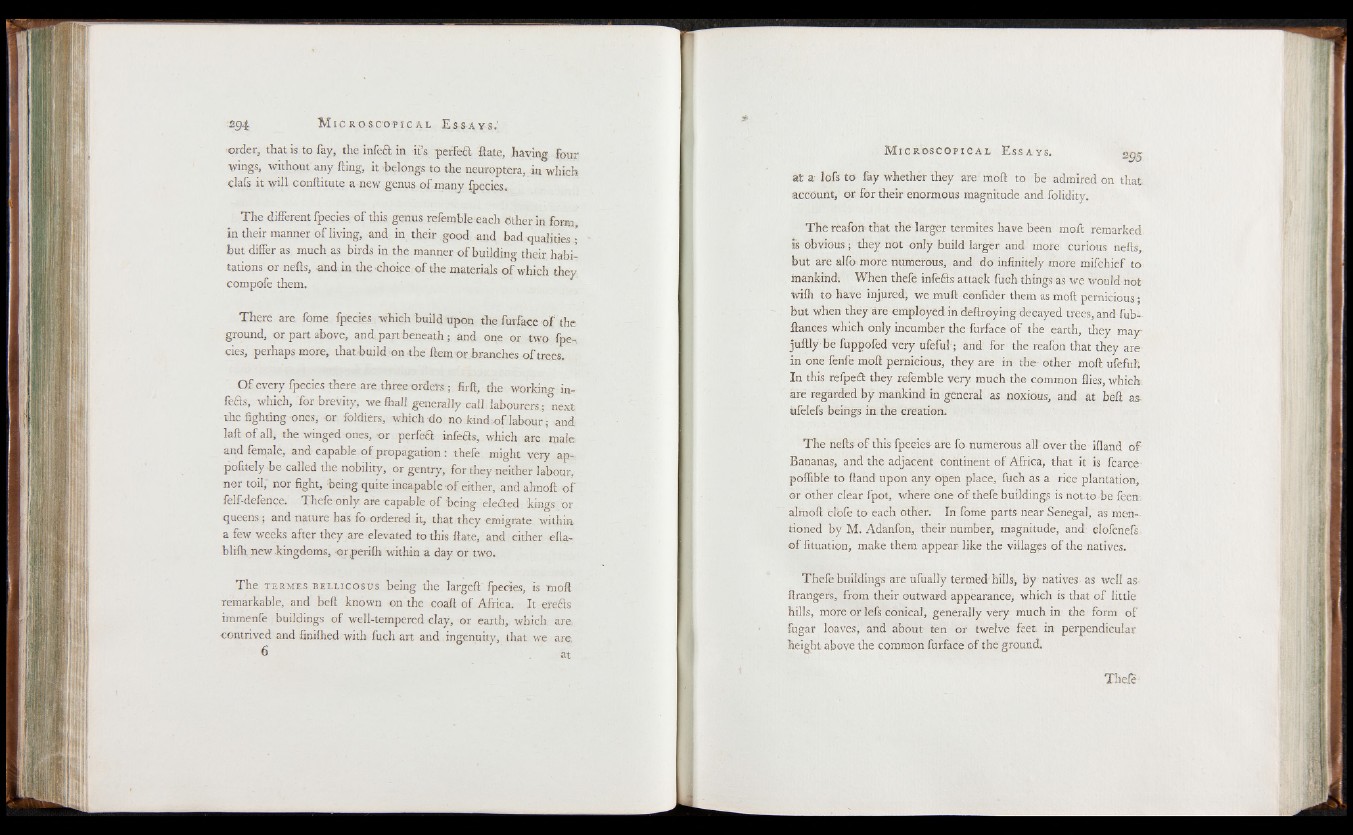
order, that is to fay, the infeft in it’s perfect hate, having four
\vings, without any fling, it belongs -to the neuroptera, in which
clafs it will conftitute a new genus o f many fpecies.
The different fpecies o f this genus refembleeach cither in form
in their manner o f living, and in their good and bad qualities ;
but differ as much as birds in the manner o f building their habitations
or nefls, and in the choice o f the materials o f which they
compofe them.
There are fome fpecies which build upon the furface o f the
ground, or part above, and. part beneath ; and one or two fpecies,
perhaps more, that build on the Item or branches o f trees.
O f every fpecies there are three orders ; firft, the working infects,
which, for brevity, we fhall generally call labourers ; next
the fighting ones, or foldiers, which do no kind o f labour; and
laft o f all, the winged ones, o r perfect infe&s, which are male
and female, and capable of propagation ; thefe might very ap-
pofitely be- called the nobility, or gentry, for they neither labour,
nor toil,* nor fight, being quite incapable o f either, and almoft o f
felf-defence. Thefe only are capable o f being elected kings or
queens ; and nature has fo ordered it, that they emigrate within
a few weeks after they are elevated to this ftate, and either efta-
blifh new kingdoms, or perifh within a day or two.
The termes bellicosus being the largeft fpecies, is moft
remarkable, and belt known on the coaft o f Africa. It erefts
immenfe buildings o f well-tempered clay, or earth, which are,
contrived and finifhed with fuch art and ingenuity, that we are.
6 . at
M i c r o s c o p i c a l E s s a y s .
at a lofs to fay whether they are moft to be admired on that,
account, or for their enormous magnitude and folidity.
The reafon that the larger termites have been molt remarked
is obvious; they, not only build larger and more curious nefls,
but are alfo more numerous, and do infinitely more mifchief to
mankind; When thefe infe&s attack fuch things as We would not
wifh to have injured, we muft confider them as moft pernicious;
but when they are employed in deftroying decayed trees, and fub-
ftanoes which only incumher the furface o f the earth, they may-
juftly be fuppofed very ufeful; and for the reafon that they are
in one fenfe moft pernicious, they are in the other moft ufeful.
In this refped they refemble very much the common flies, which;
are regarded by mankind in general as noxious, and at belt as-
ufelefs beings in the creation.
The nefls of this fpecies are fo numerous all over the ifland o f
Bananas, and the adjacent continent of Africa, that it is fcarce
poflible to ftand upon any open place, fuch as a rice plantation,
©r other clear fpot, where one o f thefe buildings is not,to be feem
almoft clbfe to each other. In fome parts near Senegal, as mentioned
by M. Adanfon, their number, magnitude, and elofenefs
o f lituation; make them appear like the villages o f the natives.
Thefe buildings are ufualfy termed hills, by natives as well as
ftrangers, from their outward appearance; which is that o f little
hills, more or lefs conical, generally very much in the form o f
fugar loaves, and about ten or twelve feet in perpendicular
height above the common furface of the ground.